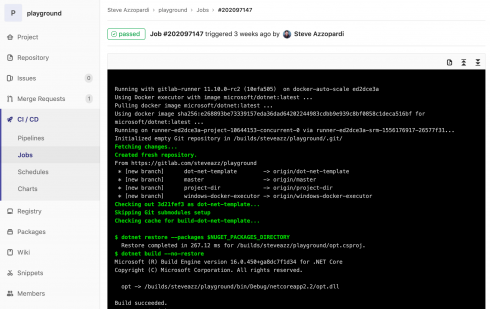
GitLab 11.11 has launched with multi-assignment for MRs and container enhancements that will help increase collaboration throughout the entire DevOps lifecycle, according to GitLab.
GitLab now supports multiple assignees for a merge request and automated deployment notifications for Slack and Mattermost.
As for containers, the new release now supports Windows Container Executor for GitLab Runners, which will allow the use of Dockers on Windows. It also includes a caching proxy for docker images and an instance level Kubernetes cluster.
Xamarin.Forms 4.0 released
Xamarin.Forms 4.0 was released with Shell, a navigation-aware container for building mobile applications.
Shell provides simple syntax to establish an app’s flyout and tab menus and a route based URI navigation service.
Other new features include Android fast renderers, which are now enabled by default, unified image source types, and tab ordering for increased accessibility.
WhiteSource partners with GitHub
Open-source security company WhiteSource is partnering up with GitHub to help developers detect open-source vulnerabilities in their GitHub repositories more easily, according to the company.
WhiteSource gains insights into vulnerabilities in open-source projects from the National Vulnerability Database (NVD), security advisories and open-source projects’ issue trackers.
In late 2017, GitHub improved its security features by adding security alerts that notify developers about vulnerable dependencies in their private and public repositories that also told them about relevant fixes.
Google is creating an open-source basis universal texture format
Google partnered up with Binomial to open-source the Basic Universal texture codec to “improve the performance of transmitting images on the web and within desktop and mobile applications, while maintaining GPU efficiency,” Google wrote in a blog.
The user of the codec can compress an image using the encoder, then insert the transcoder code before rendering, which will turn it into a GPU format that the computer can read. The GPU will read only the parts it needs, improving performance.
“With this partnership, we hope to see adoption of the transcoder in all major browsers to make performant cross-platform compressed textures accessible to everyone via the WebGL API, and the forthcoming WebGPU API,” Google wrote.






